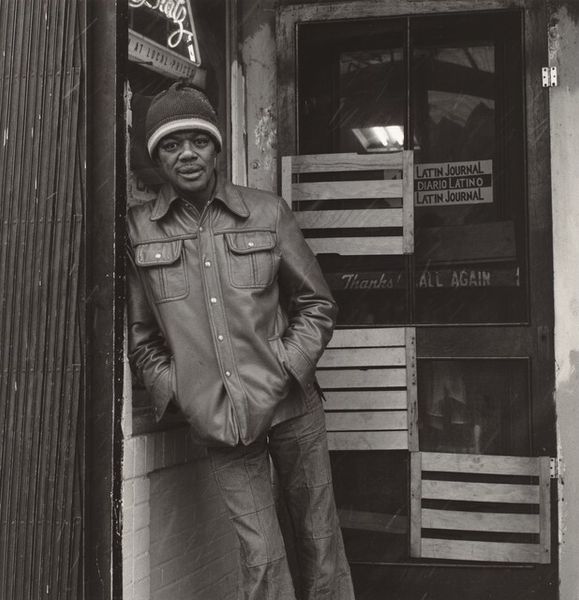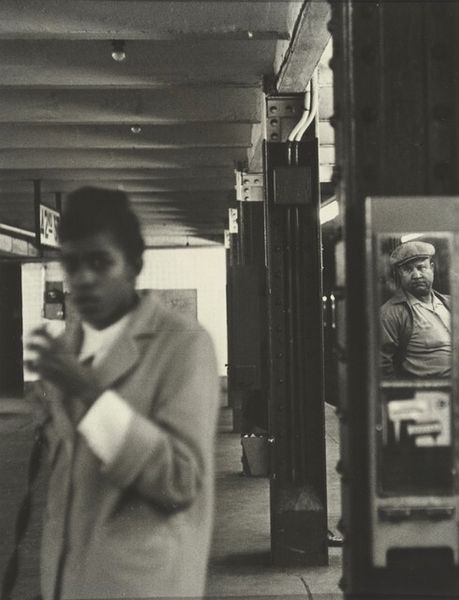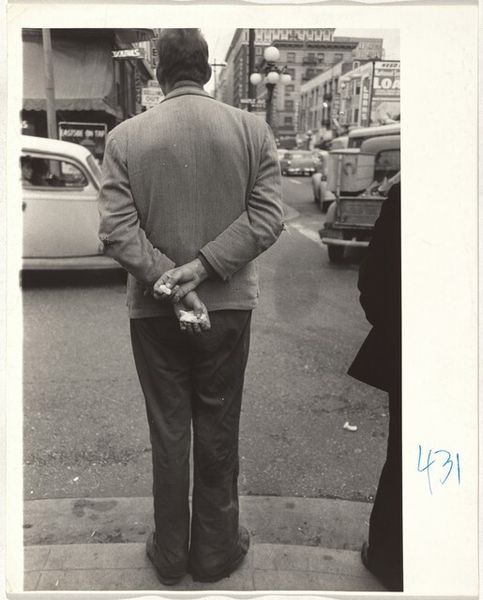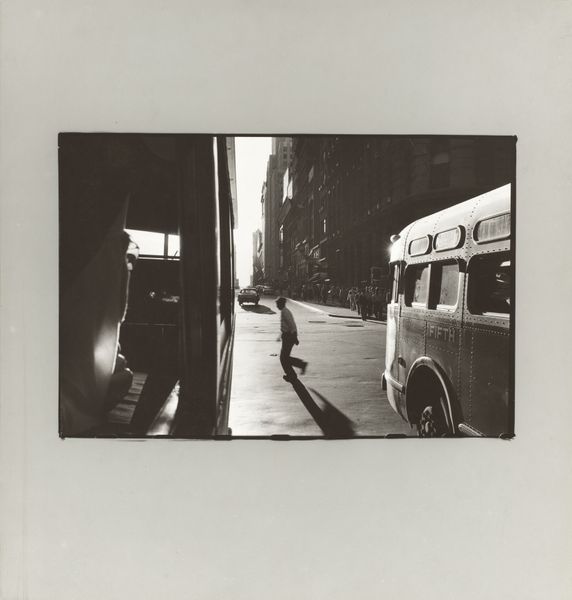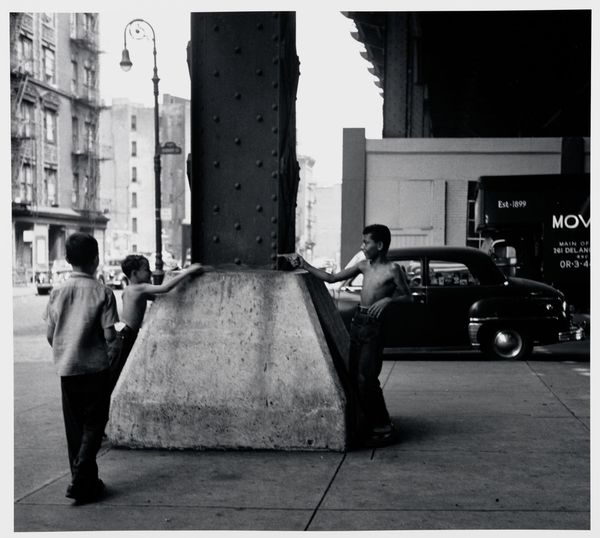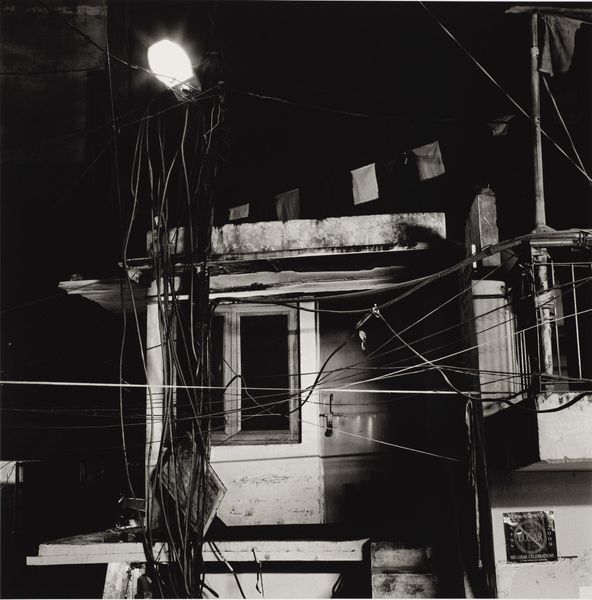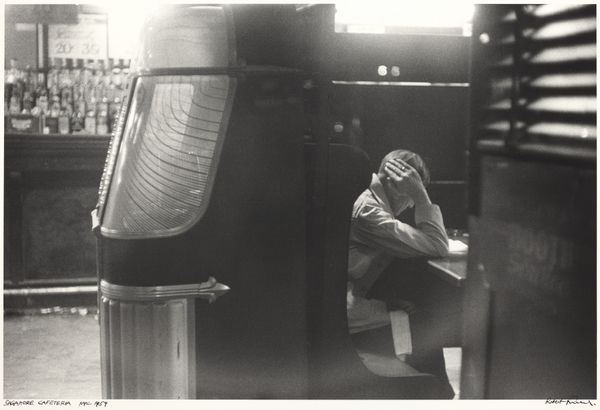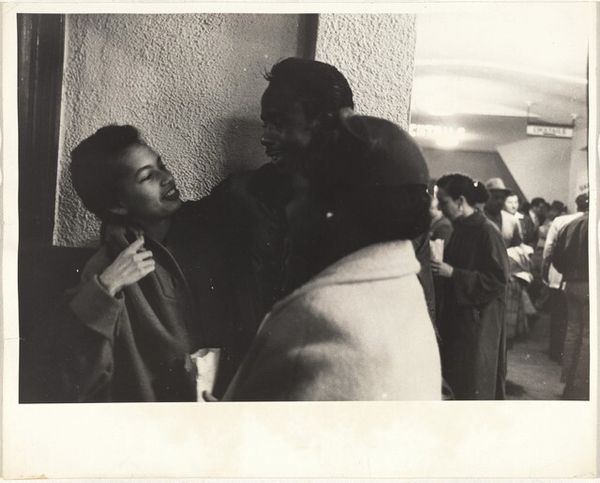
photography, gelatin-silver-print
#
portrait
#
black and white photography
#
black and white format
#
street-photography
#
photography
#
black and white
#
gelatin-silver-print
#
monochrome photography
#
ashcan-school
#
monochrome
#
realism
Dimensions: image: 16.1 × 23 cm (6 5/16 × 9 1/16 in.) sheet: 20.1 × 25.4 cm (7 15/16 × 10 in.)
Copyright: National Gallery of Art: CC0 1.0
Curator: Nathan Lerner’s gelatin-silver print, “Shoe Shine Boy,” was created in 1937, during a period of widespread economic hardship in the United States. It feels so still somehow...like a held breath. Editor: You’re right, it’s almost haunting. The deep shadows and the boy's downcast gaze…it definitely speaks of quiet resilience, or maybe even weary acceptance, during the Depression. I think it also hints at the racial divides defining the work available. Curator: There’s a striking contrast in the composition, isn't there? You've got the gleaming hood of what I presume is someone else’s automobile reflecting light in the background against the boy. It makes me consider wealth against scarcity. He has such elegance and is also draped in shadow. I wonder if that shadow could be a projection of possibility and hope? Editor: Yes, the image's focus on labor amidst the trappings of early capitalism definitely sparks important social and historical questions. In particular, the shadow might signal the boy's constrained upward mobility. It’s an open-ended scene, so many readings are valid, really. Curator: Exactly, open ended and quiet. And that beautiful sweater; the simple wooden chair; the stance--everything is so simply human. There's dignity, too. This is how you shine: with such quiet dignity, against a society pushing against your spirit and agency. It is actually...lovely! Editor: And of course, photography itself plays a critical role in shaping our understanding of that era, right? From Walker Evans' documentation of sharecroppers to Dorothea Lange’s "Migrant Mother," this mode of social documentary invited empathy for a lot of folks marginalized by capitalist enterprise. Lerner's picture feels like another facet of that story. Curator: Yes, you are right--each of those stories contributing their own facet to one of American history. It’s nice to pause with them. I am also left to consider that light! Editor: For sure! So much to absorb in just one frame, but each element connects powerfully. Curator: Totally. Let’s take that sense of connectedness with us. Editor: Agreed, a great snapshot into a much larger narrative, indeed.
Comments
No comments
Be the first to comment and join the conversation on the ultimate creative platform.
